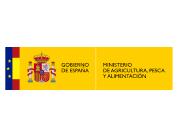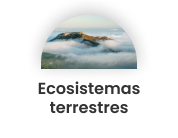
Preparing entomoaficionados as key elements in the conservation of ESCarabajos, Spiderlings, Dragonflies and Butterflies (SCARIALIMANIA)
MITECO
Line of action:
Terrestrial ecosystemsStatus:
FinalizadoExecution date:
2020Total budget:
€52,426.14Amount of aid from the Biodiversity Foundation:
€32,861.40Beetles, spiders, dragonflies and butterflies are part of the arthropods, a major component of the biodiversity recorded with vital importance in the ecological processes of the planet. According to the entity, most citizens are not only unaware of this value, but also the species that inhabit their immediate environment, the state of conservation in which they are found and how their participation can contribute to preserving them. Based on the premise that to appreciate you have to know, ESCARALIMANÍA aims to extend knowledge about target groups and the collaboration of citizens in activities and studies related to their conservation. The selected arthropod groups are of great interest due to their megadiversity (except dragonflies), include several legally protected species that are attractive to the general public (except spiders) and pose a challenge when it comes to overcoming prejudices by becoming aware of their importance.
The aim of the project is to promote knowledge and public participation in the importance and conservation of arthropods.
It has the following specific goals:
- Obtain existing information related to the field of study.
- To raise public awareness of the importance of arthropod groups of great diversity and to initiate them in their recognition and identification.
- Encourage citizens to apply this knowledge in the field.
- Promote the collaboration of citizens in inventories necessary for the conservation of arthropod diversity.
- Involve citizens in activities that promote arthropod diversity.
- To disseminate the objectives and achievements of the project to the general public and professionals in the sector.
- Carrying out actions to restore and improve the habitat of the target groups, such as, for example, building insect hotels, piles of dead wood, restoration of riverside vegetation, butterfly oases, etc.
- Preparation of “Friendly Keys” or sheets to be used in monitoring networks: photographic cards that highlight the differences between species to save identification time in the field.
- Preparation of a protocol for participation in citizen participation activities, related to data collection, use of citizen science platforms and other data that could beof interest to the public.
- Promotion of knowledge of the arthropods included in the project (saproxylic beetles, spiders, odonates and lepidoptera) through the organisation of at least one course.
- Holding open days of citizen participation with the aim of registering as many species of the target groups as possible throughout the day.
- Initiation of the odonate monitoring network of the Autonomous Community of the Basque Country and expansion of the state butterfly network in other autonomous communities.
- Preparation of basic didactic material for saproxylic beetles and spiders, with a bibliographic review of Field Guides for quick identifications.
- Preparation of advanced didactic material for lepidoptera and odonates, with a bibliographic review of Field Guides and other more specialized works.
- It has contributed to improving the knowledge and awareness of the general public about the entomofauna that surrounds them.
- Presentations have been organized at scientific conferences, informative materials, such as brochures and videos; and a photo contest, in which more than 250 images have been received.
- An awareness and training campaign has been carried out for which five teaching units have been developed.
- Three citizen participation events have been held and monitoring networks have been established at 47 different points.
- In total, nearly 200 days have been held with different activities in which more than 580 people have participated.
- Conservation and restoration work has been carried out such as the creation of insect hotels, the holding of seed bomb workshops for native species or the construction of ponds, among others.


Preparing entomoaficionados as key elements in the conservation of ESCarabajos, Spiderlings, Dragonflies and Butterflies (SCARIALIMANIA)









 back to search
back to search 